As we enter Autumn across the northern half of the planet, gardeners are weighing up whether the lawn could use one more trim before winter. The patch of grass in the garden has tried to be wild all summer, but has been kept in check by the mechanical grazer. But what’s wrong with some long grass? Why do we care about the maintenance of our lawns so much?
The trend was started by rich aristocrats in eighteenth century England and France, who used a tamed lawn to indicate how wealthy they were. (Back then it had to be clipped by hand, making it a very expensive enterprise.)1 This association with wealth has been passed down to the modern day. Like a gold watch and a fancy car, a well-kept lawn serves as a status symbol to your neighbors.
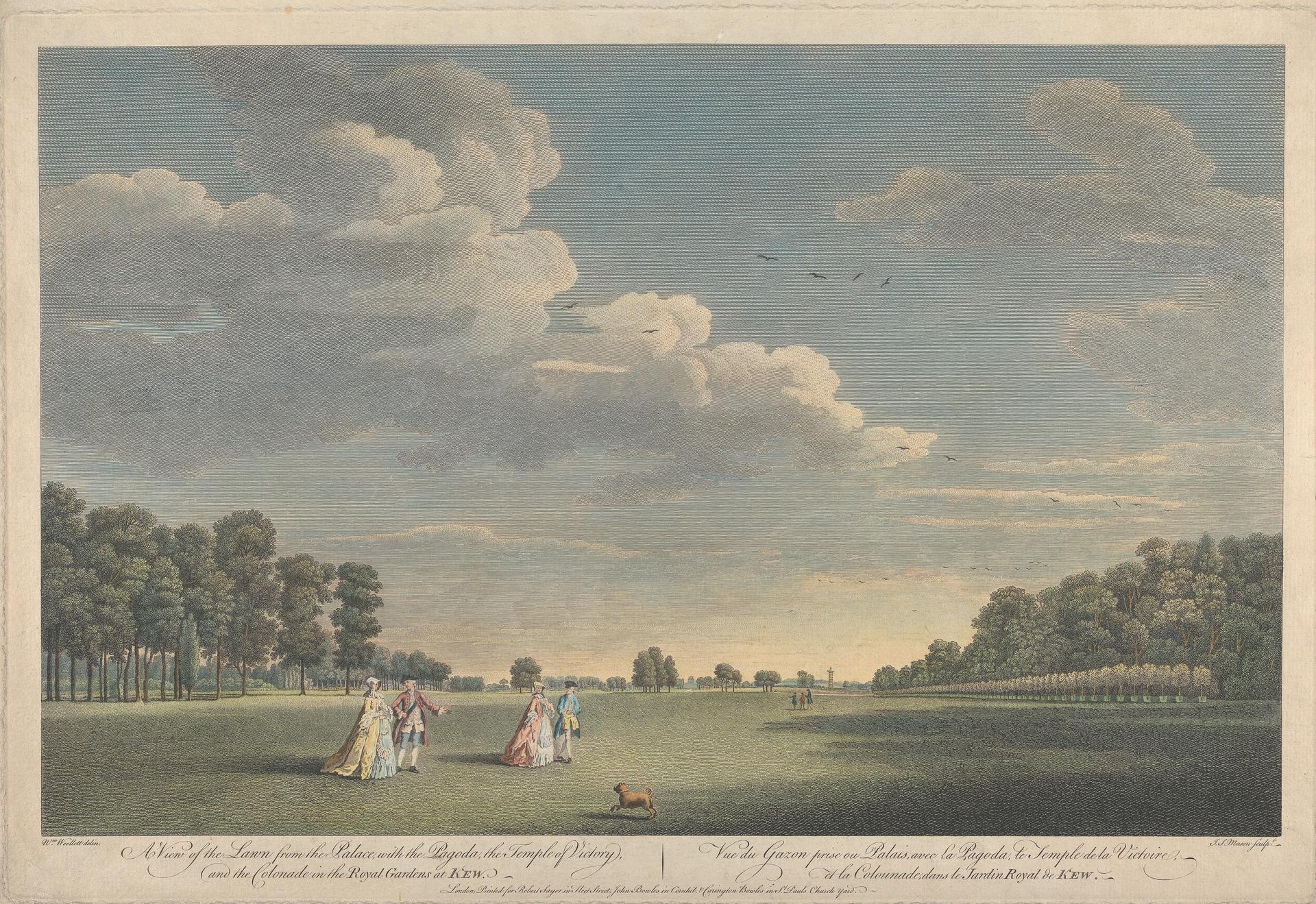
But why did the rich aristocrats do it in the first place? Why were they proud that they could conquer nature? And why are we embarrassed to let our gardens become overgrown and unruly? Even with the modern move towards “rewilding” our gardens, we still feel the need to tell our friends that we’re planting native plants, or feeding pollinators, so the “wild” garden still has use and value. We’re still in charge, even when we magnanimously relinquish some part of our control.
The urge to bring order to nature is deeper than a transient social pressure. Instead, it’s a set of behaviors with deep evolutionary roots: a way of life that’s been selected for in our evolution over the course of thousands — or even millions — of years.
Constructing our Niche
Our story starts somewhere in Sub-Saharan Africa between 2 and 3 million years ago. One evolutionary scenario suggests the emergence of the genus Homo was dependent on the increased foraging benefits created by fires.2 According to the “pyrophilic primate” hypothesis proposed by a team of anthropologists at the University of Utah, our very ancient ancestors may have intentionally begun moving burning or smoldering wood from naturally occurring fires to unburnt areas in order to increase the amount of foraging area they had access to after a fire.2 In doing so, our distant ancestors may have forever modified the ecosystem in East Africa, benefitting some species at the loss of others. Our existence today would imply this strategy of landscape manipulation was a winning one for early members of our genus. The populations who regularly exerted some change on the landscape through burning regimes possessed a key advantage over those who didn’t. Over time, it seems likely that any genes involved in the behavior linked to starting fires in the landscape would be selected for.
Potential evidence for larger landscape scale fire management dates back to 100,000 to 200,000 years ago,3 with one study finding evidence from 400,000 years ago.4 These dates correlate with the accepted date for our own species’ appearance on the scene roughly 2-300,000 years ago.5 Perhaps this distinct behavior is a key characteristic that led to our emergence as a unique species, and could even explain why humans were able to reach much higher densities in ecosystems that could not sustain similar levels of less-meddling Neanderthals.6
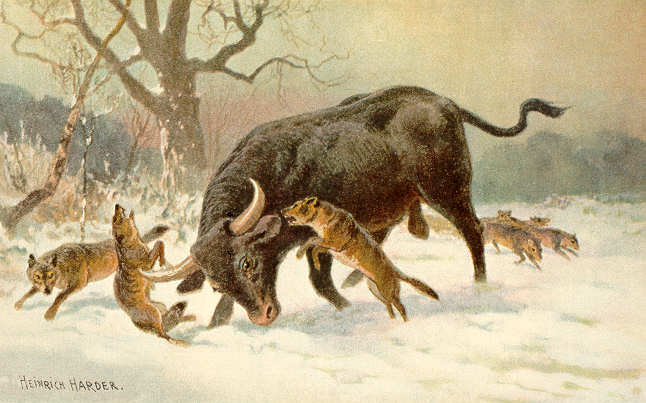

We know that behavioral traits are something that can be selected for in a short period of time. Take, for instance, our domestic animals. Dogs are our oldest companions, but it’s probably safe to assume that 20,000 years ago their ancestors were no different from modern wolves in their behavior. Over that time period they have lost fear of being near humans, evolved stricter social hierarchies,7 and even learned how to read our emotions.8 Likewise, our modern friendly, peaceful cows are descended from the fierce aurochs, beasts that Julius Caesar warned “spare neither man nor wild beast which they have espied.”9 Selection by humans has led to complete changes in behavior which are seemingly intrinsic to modern domestic animals.
Seeing as humans can cause these behavioral shifts so easily in other mammals, why not in ourselves? In fact, there is evidence that our species has gone through exactly this shift in a process known as self-domestication.10 We are less aggressive and more cooperative than our ancestors,11 and since our split from the lineage containing Neanderthals, hundreds of genes shown to be involved in facial and cranial development have accumulated regulatory mutations.10 Many of these same genes have also been under selection in our domestic animals.10
So if we have evidence that some behavioral traits in humans have been selected for in our unique evolution, I suggest we add one in particular to the potential list. That behavior is the intrinsic need to exert some level of control over our environments. Whether it was our original homeland in East Africa, the forests of North America, the jungles of the Amazon or the savannahs of Australia, wherever humans arrived, those groups of people who actively modified their ecosystems were at an advantage to those who didn’t. From eradicating the predators that might kill our children, to burning scrub to force grass to grow and attract prey, to nurturing and planting fruit trees, those peoples that affected change on their landscape were safer and had more calories, and so would have passed on their genes more often. In the same way that a golden retriever has the urge to swim and bring things back to their owner, modern humans may have been bred to want to manage wild places.
Animals modifying their immediate environment for their own benefit is not a novel idea. Known as niche construction,12 it can be seen in behaviors such as termites building mounds and birds making nests. But the difference between humans and these other species is that we are completely plastic in how we create niches for ourselves. Rather than our niche construction behavior being specific like a beaver making a dam, instead in humans it is simply an innate desire to “improve” the world around us in any way we can to ensure the survival of ourselves and our descendants. Homo sapiens is an obligate ecosystem architect, and in any ecosystem this behavior will inevitably lead to an environment specific strategy that ensures a population's survival.
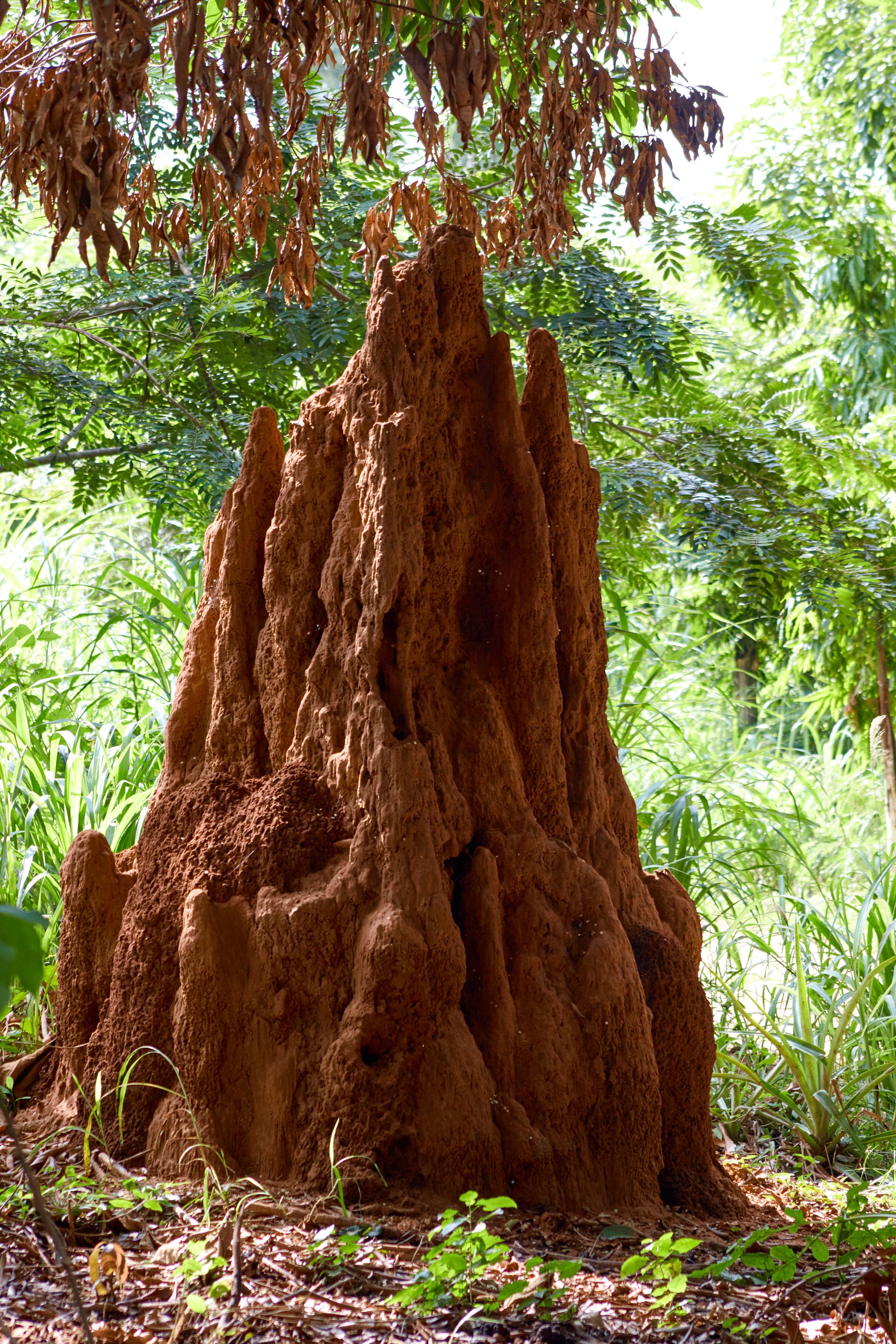


The evidence can be seen in the myriad of ways humans have adapted to environments around the world. Despite the popular view of non-Western tribal people living in harmony with nature before the arrival of modern farming, we now know that people living in every corner of the planet were modifying the landscape to fit their needs long before Europeans expanded their culture around the globe. When the British first landed on Australia's east coast, they were amazed to find a verdant grassland perfect for rearing sheep.13 It turns out that it was a completely man-made landscape, created by Aboriginal Australians regularly burning the landscape in a controlled manner to increase kangaroo numbers, with the method even being dubbed “fire-stick farming.”13 Likewise the rich open forest landscape teeming with wild game, fruits, and meadows that greeted early American colonists was in fact created by Native Americans’ agricultural clearing and burning.14 Even evidence from the Amazon rainforest suggests that instead of being a pristine untouched wilderness, large swaths are instead overgrown orchards.15 For millennia before Old World diseases and harsh colonial policies wiped most of them out, indigenous groups managed forests to promote useful trees over other wild trees,15 and improved the fertility of soil with charcoal and organic matter.16
The advent of farming in the Middle East 10,000 years ago, often thought of as a pivotal change in how humans interacted with and shaped their environments, could instead be a continuation of an ancient pattern of behavior stretching back 300,000 years or more. The common image of this change depicts passive hunter gatherers following herds of animals around the grasslands of the Levant, when suddenly someone had a eureka moment and decided that instead of being helpless subjects of their environments, they would take control and grow the food they need from the seeds of grasses (i.e., grains). In reality the grassland they lived in probably existed in part due to their intentional burning, and genetic evidence suggests that humans started influencing the evolution of wheat and barley 30,000 and 20,000 years ago respectively,17 predating the agricultural revolution by 10-20,000 years. So rather than farming being a complete change in how humans behave, instead it could be viewed simply as an intensification of one of our natural behaviors.
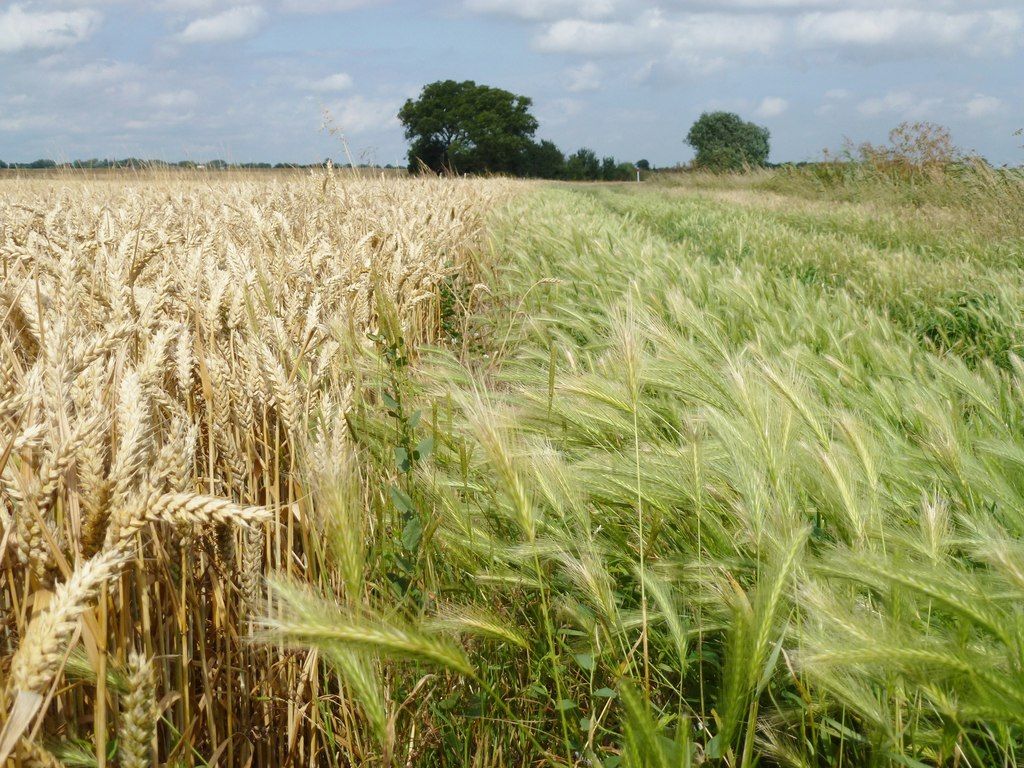
Reshaping our Habits
Jump forward now to the modern day. We are all too familiar with the ongoing crises affecting biodiversity and the climate. However, by simply blaming corporations, capitalism, and the worst excesses of the modern economy, we are giving ourselves scapegoats instead of addressing the deeper roots of why we keep damaging the planet. This harm is not the consequence of a particular culture or form of social organization; instead, it is a manifestation of behavior rooted in the deepest level of what makes us human. We need to accept that it is in our nature to want to control nature, and in doing so we can begin to recognize where this behavior is no longer in our best interest, but also direct it to where it’s needed. Every year our knowledge of how ecosystems function deepens — and our technical capacity to reshape ecosystems grows.
Human ecosystem management has already kept a number of species from going extinct. For example, a large proportion of Europe’s bird species are considered farmland birds,18 meaning they are evolved for open grassland or forest edge environments (i.e., savannah). In the past interglacial period, this habitat was created by Europe’s elephants, rhinos and other large herbivores which are now extinct,19 most likely due to human action.20 Yet these open landscape species survive. In a perhaps ironic twist, these birds are now largely reliant on ecosystem-meddling Homo sapiens for their existence, dwelling in habitat that is largely created by traditional human farming activities, which prevent closed canopy forest from taking over. In the absence of megaherbivores like elephants being reintroduced any time soon, we need to recognize our function as keystone species in these environments.
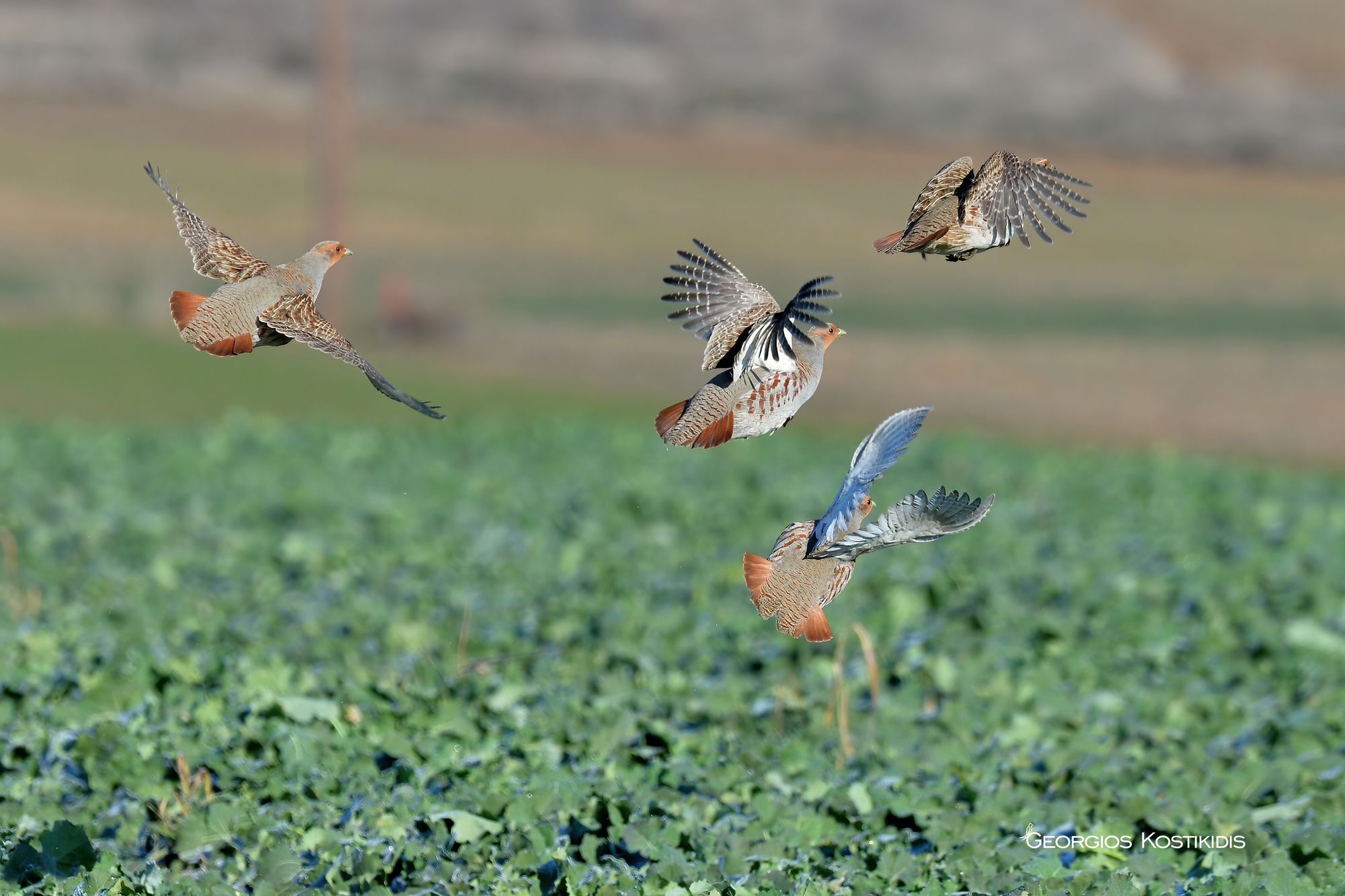
Of course, direct human intervention is not always required to ensure the thriving of a species. Instead, sometimes the best thing is not to interfere but instead intentionally step back and let nature figure it out. In the 01960s, when the deadly rinderpest virus was finally eradicated from cattle in East Africa, the numbers of wildebeest in the Serengeti started to increase dramatically. There were calls by wildlife experts to start culling and managing the herd, but they were ignored by the park ecologists who figured nature knew best.21 Once the herd reached around 1.3 million animals it stabilized and changed the landscape in a way that benefitted many more animals. Increased grazing led to fire suppression which meant more trees grew, providing more food for elephants, whose numbers then increased. The difference between the savannahs of Africa and the grasslands of Europe may lie in their ecological history: the Serengeti retained its full suite of megafauna and other species, so was able to fully recover on its own, whereas Europe has lost most of its large animals — leaving humans as both culprit and last line of defense for ecological degradation.
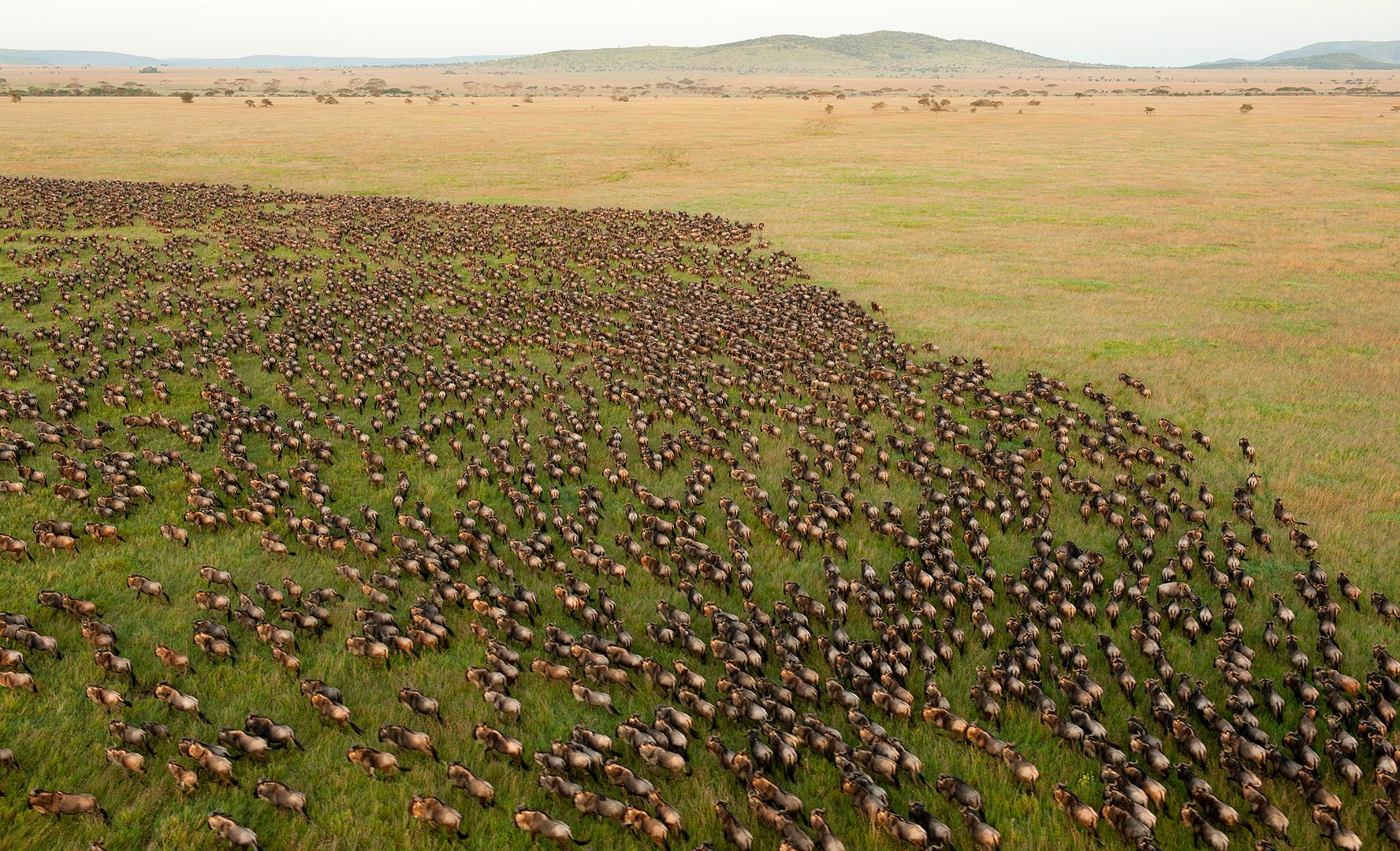
So through our actions we have reached our present predicament, where we can see that we are needed to help certain ecosystems, and yet some are better off without us. Our deeply ingrained unease at leaving nature unmanaged means that as long as we are around we will want to interfere with our environment. But just as we’re learning to overcome other ingrained behaviors like wanting to overindulge in sugary foods, we can also learn to tame this behavior. The key will be knowing where to show restraint, and where our input has value. The megafaunal extinctions caused by our ancestors at the end of the Pleistocene led to a simplification of the complexity of ecosystems22 outside of Africa and South East Asia, and this simplification can make ecosystems less resilient.23 But it turns out we can actually restore ecological functions using proxies for extinct species, one example being Pablo Escobar’s escaped hippos in Colombia filling the long empty niche of the extinct llama Hemiauchenia paradoxa.24 The prospect of de-extinction further promises that we will be able to restore extinct ecological functions and even potentially prevent runaway climate change by keeping permafrost intact in Siberia using mammoth-elephant hybrids.25
But even if the prospect of de-extinction doesn’t pan out, we could begin taking the very long view and starting the evolutionary processes that will reap ecological rewards for our descendants thousands of years in the future. If we can’t bring back the woolly mammoth, then instead we could introduce Asian elephants to parts of temperate Eurasia or North America which are warm enough for them to survive and thrive, but also have access to colder environments. Over time as some adventurous herds head further north following summer growth, natural selection will take the lead, and hairy elephants will start to reappear in the Arctic. Like our ancient ancestors in the Levant 30,000 years ago beginning a process that would lead to the agricultural revolution 20,000 years later, we can start putting the building blocks of future ecosystems in place now so that our descendants will live on a planet with fully functioning resilient ecosystems everywhere. Our innate desire to control nature has led us to where we are today, both the good parts and the bad. Recognizing this behavior means we can show restraint in the Serengetis of the world, and direct our efforts toward rebuilding the damaged parts.
References
1. Jenkins, V. (1994). The lawn: A history of an American obsession. Smithsonian Institution.
2. Parker, C. H., Keefe, E. R., Herzog, N. M., O'connell, J. F., & Hawkes, K. (2016). The pyrophilic primate hypothesis. Evolutionary Anthropology: Issues, News, and Reviews, 25(2), 54-63.
3. Gowlett, J. A. (2016). The discovery of fire by humans: a long and convoluted process. Philosophical Transactions of the Royal Society B: Biological Sciences, 371(1696), 20150164.
4. Bird, M. I., & Cali, J. A. (1998). A million-year record of fire in sub-Saharan Africa. Nature, 394(6695), 767-769.
5. Vidal, C. M., Lane, C. S., Asrat, A., Barfod, D. N., Mark, D. F., Tomlinson, E. L., ... & Oppenheimer, C. (2022). Age of the oldest known Homo sapiens from eastern Africa. Nature, 601(7894), 579-583.
6. Mellars, P., & French, J. C. (2011). Tenfold population increase in western europe at the neandertal–to–modern human transition. Science, 333(6042), 623-627.
7. Wynne, C. D. (2021). The indispensable dog. Frontiers in Psychology, 12, 656529.
8. Albuquerque, N., Guo, K., Wilkinson, A., Savalli, C., Otta, E., & Mills, D. (2016). Dogs recognize dog and human emotions. Biology letters, 12(1), 20150883.
9. C. Julius Caesar. Caesar's Gallic War. Translator. W. A. McDevitte. Translator. W. S. Bohn. 1st Edition. New York. Harper & Brothers. 1869. Harper's New Classical Library.
10. Zanella, M., Vitriolo, A., Andirko, A., Martins, P. T., Sturm, S., O’Rourke, T., ... & Testa, G. (2019). Dosage analysis of the 7q11. 23 Williams region identifies BAZ1B as a major human gene patterning the modern human face and underlying self-domestication. Science advances, 5(12), eaaw7908.
11. Wrangham, R. (2019). The goodness paradox: how evolution made us both more and less violent. Profile Books.
12. Odling-Smee, F. J., Laland, K. N., & Feldman, M. W. (1996). Niche construction. The American Naturalist, 147(4), 641-648.
13. Jones, R. (2012). Fire-stick farming. Fire Ecology, 8, 3-8.
14. Denevan, W. M. (1992). The pristine myth: the landscape of the Americas in 1492. Annals of the Association of American Geographers, 82(3), 369-385.
15. Levis, C., Souza, P. F. D., Schietti, J., Emilio, T., Pinto, J. L. P. D. V., Clement, C. R., & Costa, F. R. (2012). Historical human footprint on modern tree species composition in the Purus-Madeira interfluve, central Amazonia. PloS one, 7(11), e48559.
16. Palace, M. W., McMichael, C. N. H., Braswell, B. H., Hagen, S. C., Bush, M. B., Neves, E., ... & Frolking, S. (2017). Ancient Amazonian populations left lasting impacts on forest structure. Ecosphere, 8(12), e02035.
17. Allaby, R. G., Stevens, C., Lucas, L., Maeda, O., & Fuller, D. Q. (2017). Geographic mosaics and changing rates of cereal domestication. Philosophical Transactions of the Royal Society B: Biological Sciences, 372(1735), 20160429.
18. https://pecbms.info/
19. Sandom, C. J., Ejrnæs, R., Hansen, M. D., & Svenning, J. C. (2014). High herbivore density associated with vegetation diversity in interglacial ecosystems. Proceedings of the National Academy of Sciences, 111(11), 4162-4167.
20. Andermann, T., Faurby, S., Turvey, S. T., Antonelli, A., & Silvestro, D. (2020). The past and future human impact on mammalian diversity. Science advances, 6(36), eabb2313.
21. Carroll, S. B. (2016). The Serengeti rules: the quest to discover how life works and why it matters. Princeton University Press.
22. Galetti, M., Moleón, M., Jordano, P., Pires, M. M., Guimaraes Jr, P. R., Pape, T., ... & Svenning, J. C. (2018). Ecological and evolutionary legacy of megafauna extinctions. Biological Reviews, 93(2), 845-862.
23. Fricke, E. C., Ordonez, A., Rogers, H. S., & Svenning, J. C. (2022). The effects of defaunation on plants’ capacity to track climate change. Science, 375(6577), 210-214.
24. Lundgren, E. J., Ramp, D., Rowan, J., Middleton, O., Schowanek, S. D., Sanisidro, O., ... & Wallach, A. D. (2020). Introduced herbivores restore Late Pleistocene ecological functions. Proceedings of the National Academy of Sciences, 117(14), 7871-7878.
25. Mann, P. (2018) Can Bringing Back Mammoths Help Stop Climate Change? Smithsonian Magazine